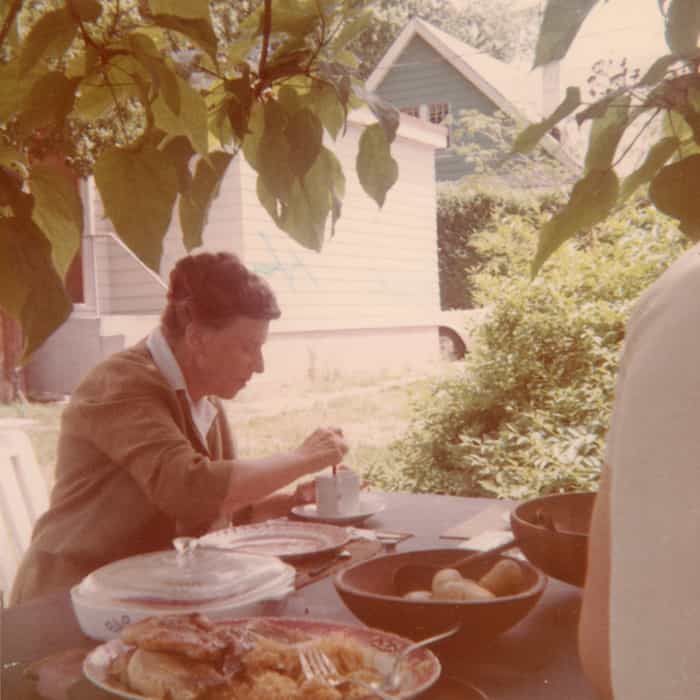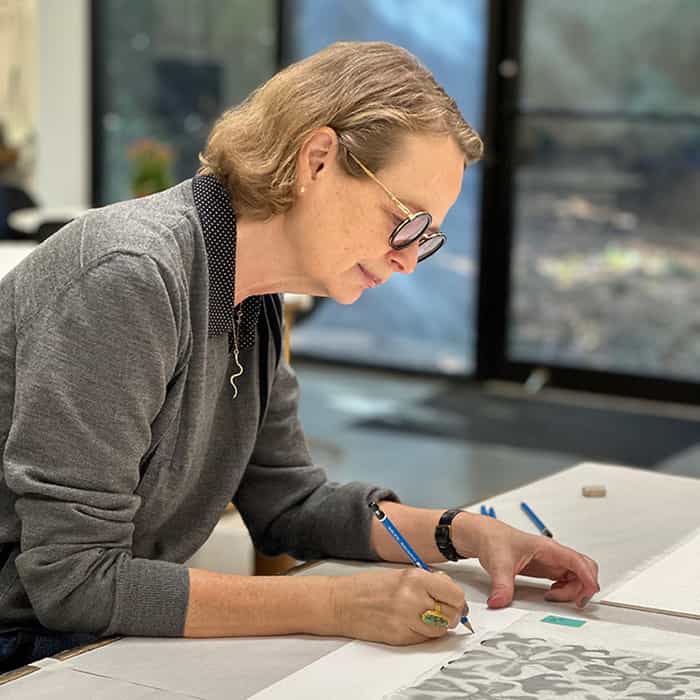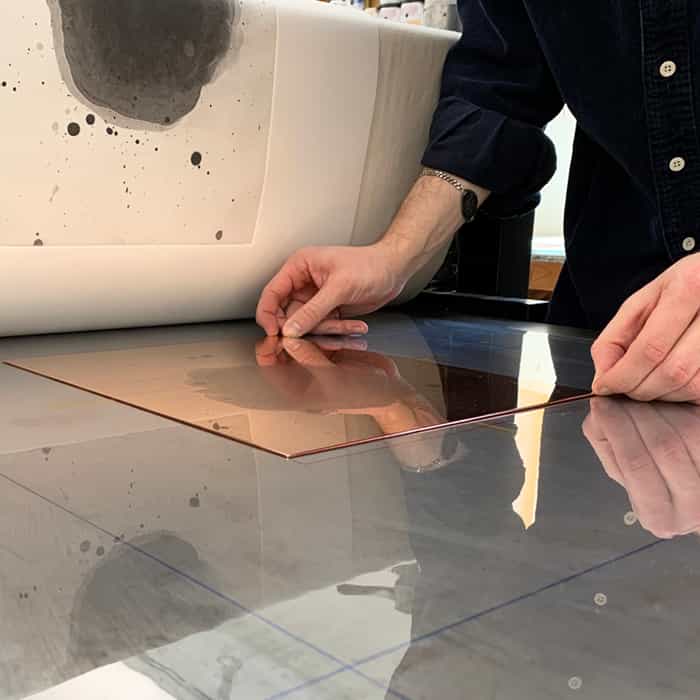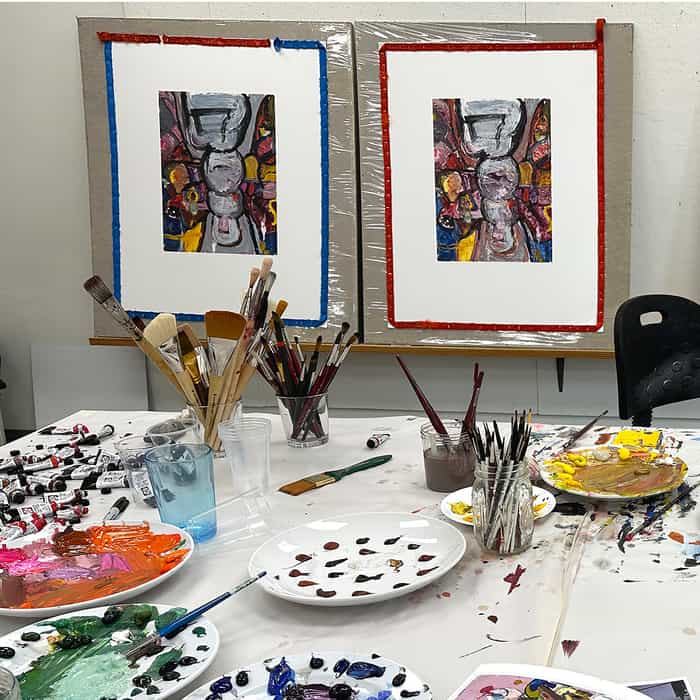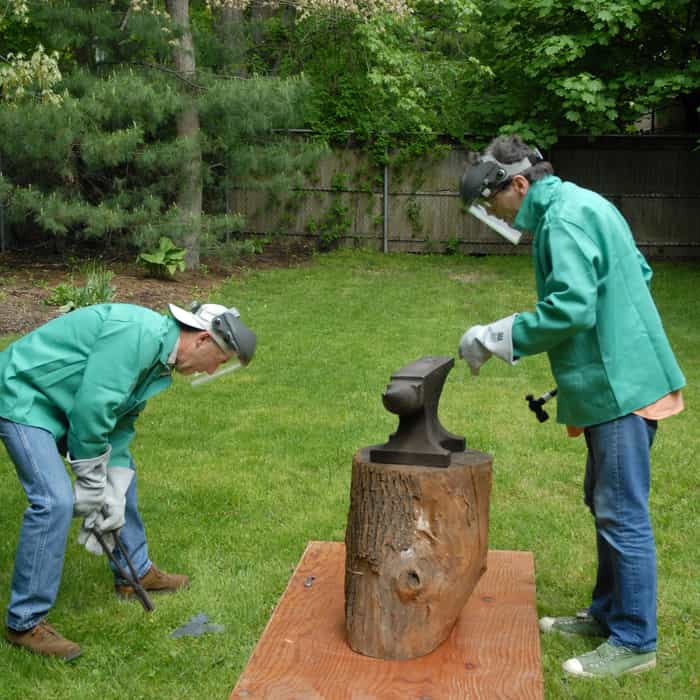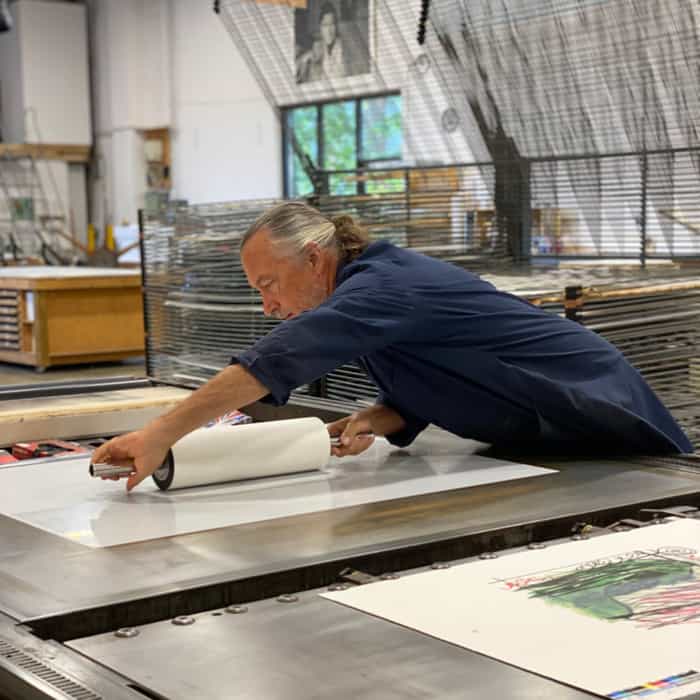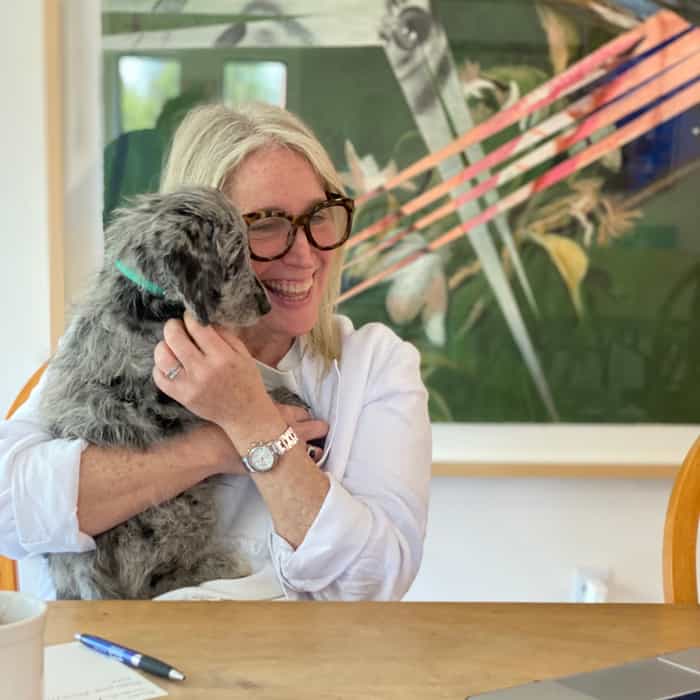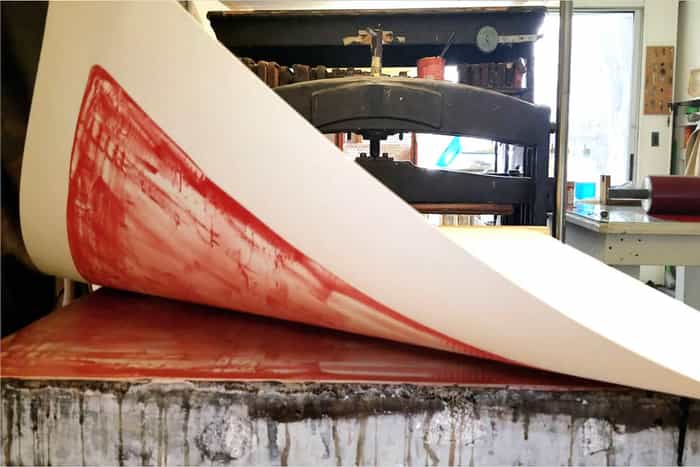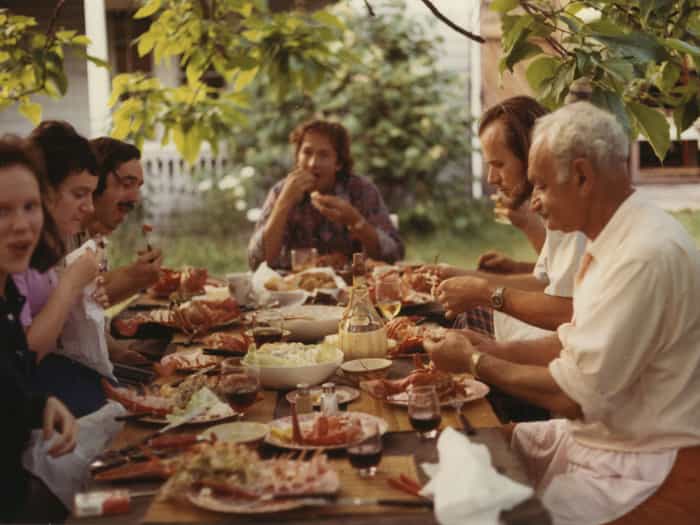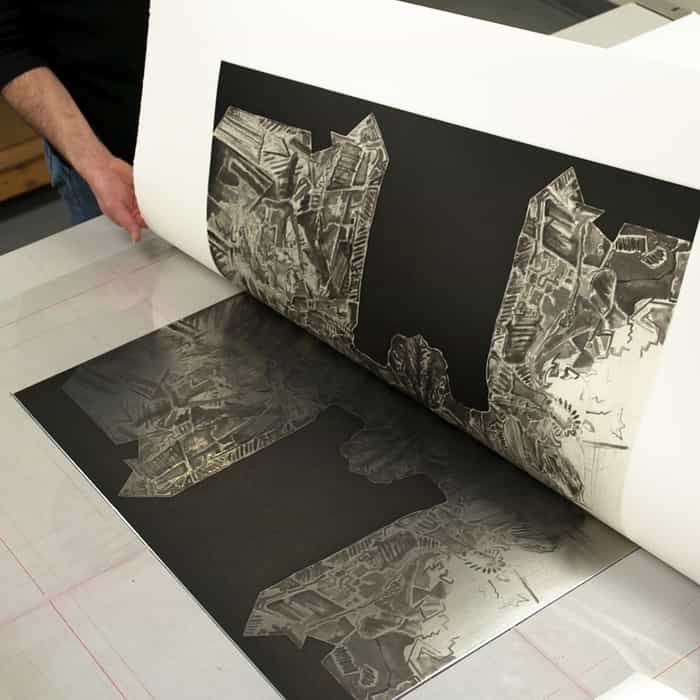In Conversation: Wyatt Kahn, Untitled (Kahns)
Holding an interest in the messiness of materials and process, New York-based artist Wyatt Kahn is always pushing the potential of traditional techniques in a way that is ardent and industrious. Throughout 2019 we documented how Kahn worked in our studios and collaborated with printmakers to create Untitled (Kahns).
Untitled (Kahns) is directly related to an original drawing. The imagery in the print depicts three central figures, or ‘direct objects’, which is a recurring motif that permeates the entirety of Kahn’s work. A number of litho plates had been made throughout the construction of the print. Kahn added and omitted plates as he saw fit during the proofing process. A layer of white silkscreen ink was added in order to cancel out, or obliterate the impression before, directly commenting on Kahn's use of correction fluid in his original drawings. His use of graphite ink (that was printed over the white silk-screen) references his use of lead in other prints and ‘paintings’.
Following his fourth solo exhibition at Galerie Eva Presenhuber, we sat down with the artist to discuss his process, the collaborative aspect of printmaking, and the influence of printmaking in his drawings and paintings.
ULAE: Can you elaborate on your approach to your most recent print Untitled (Kahns) and how it has shaped your thinking in your art?
Wyatt Kahn: So this print, Untitled (Kahns), I think I hadn’t worked at ULAE in nine or ten months and I’d come in with two ideas for two prints - really I had come in with an idea for one other print, which was the Bits that we did, but I also really wanted to make a print that really connected to some of the works that I was putting in my show in New York because I wanted to try and get prints into that show. It was kind of the first time I’ve done that, you know, think about a show, think about a particular painting. I came in and the idea was very much like the actual drawing of this print.
I thought it was going to be relatively straightforward because it was very similar to the works we did in 2016-2017, because the drawing for it was the same but in color. When we actually transformed it into a print, much like the first one, it took a life of its own and we ended up having to split the colors, add layers and layers of colors to make it this dynamic thing. The reason why I tell this little back story, is it shows how the drawings for the first prints in 2016 came about - drawings were originally made for prints and then those prints became a whole series of drawings that ultimately became the drawings of Untitled (Kahns). Then Untitled (Kahns) became a print, and that print has become more complicated than the drawing, so that relationship went back and forth. I really wanted to show all that in the exhibition.
I also think it shows the development of the print because this print, the drawing for Kahn’s, and the drawings for the prints in 2016 began the same, but the prints for Kahn’s is so much more complicated. And the process is basically the same, its litho and silkscreen but the actual print and the layers and the complexity of it is so much more. I don’t think one is a better print than another, it’s just showing the scale and the ambition and the scope.
ULAE: Since 2016, you have worked with printers at ULAE to complete eight editions in lithography, etching, and silkscreen and a group of monoprints. How would you describe the collaborative aspect of working alongside printers in the studio?
WK: When you come in here, it is a full collaboration and ambition and scope grow with the relationship. Me, Brian, Bobby and Bruce, our relationship has grown in a way where we automatically want to do the most complicated thing now. We want to do the most ambitious, complicated, fun thing. That definitely was not true in the beginning. In the beginning we just wanted to make a successful print. Now, I think part of it is that we know the printing because there is a confidence. I think there’s also a confidence that we’re going to get somewhere that is successful but we also know if there’s a print we’re trying today that’s not working, we’re going to reroute. It’s failure, but it’s also not disappointing. This print [Untitled Kahns] there were many times where we hit dead ends. I think one of the things they learned in particular from this print is that those dead ends you just kind of recalibrate and put it in a different way.
ULAE: Has making prints influenced your creative thinking in your paintings and drawings?
WK: I do think about the relationship to printing in my practice. I mean, I want to say I’ve always been this artist, but I think I’ve always wanted to be this artist. I think maybe I am closer to it now where the prints, the paintings, and the drawings all are equally important, have equally developed practices. They feed each other too, like the surface of the painting on the lead and the mark making on the lead came out of reworking a print and having the freedom of some of my natural mark making being able to come back to me in a way.
It’s interesting because in some ways when you start making a print you worry because it feels very precious in a way in the beginning, and then all of a sudden you realize it’s equally tangible and you can always redo it and change it and then it becomes very less precious. I think all three, the paintings, the prints and the drawings are continuously helping and educating and pushing each other. I think it’s just the nature of any creature, one part of your life becomes the prints, the prints become more and more ambitious and then the paintings want to be — you know it pushes everything off more to compete with each other and become more and more ambitious.
